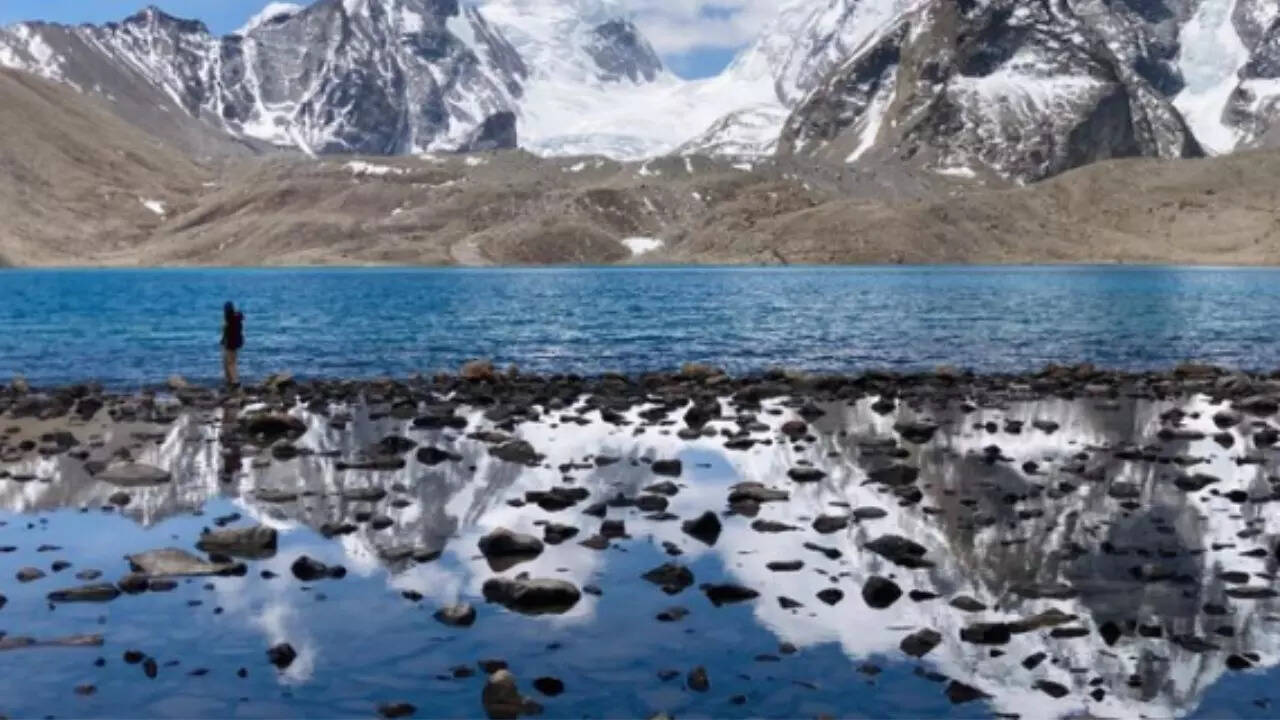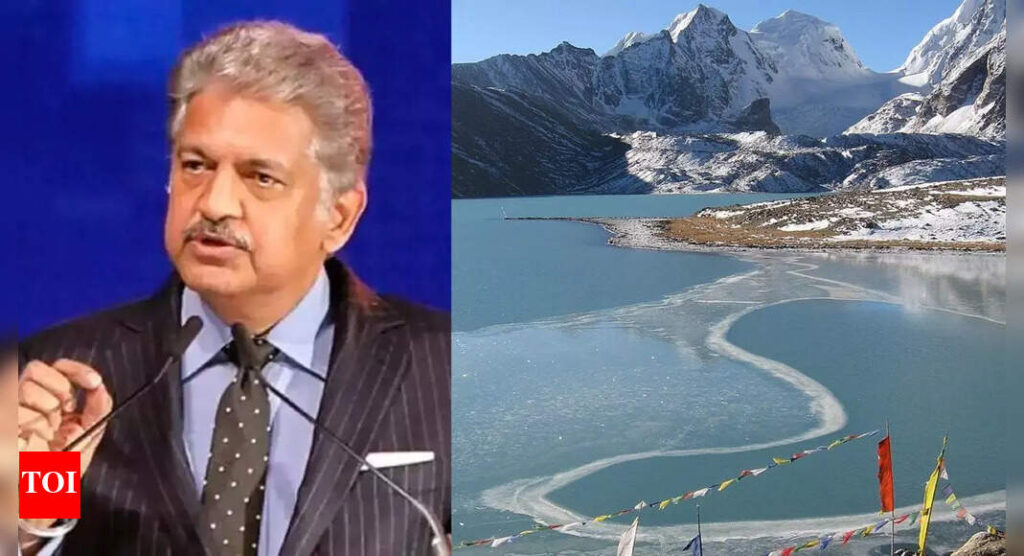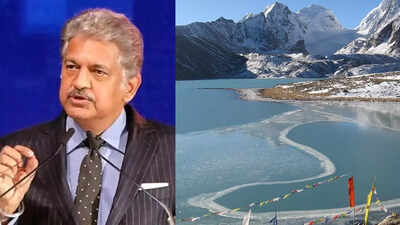Perched at a staggering 17,800 feet above sea level, Gurudongmar Lake in northern Sikkim is one of the world’s highest and most awe-inspiring lakes. Surrounded by snow-capped Himalayan peaks and glacial terrain, it is more than a natural wonder—it is a site of spirituality, myth, and ecological importance. Named after Guru Padmasambhava, the revered 8th-century Buddhist saint, this lake attracts pilgrims, travelers, and adventure seekers alike. Recently, an image captured by ex-Indian Navy pilot Capt. Sumit Bhatnagar caught the eye of industrialist Anand Mahindra, who described it as a “surreal vision,” quoting Rabindranath Tagore to capture its tranquil beauty.
Anand Mahindra shares stunning photo of Gurudongmar Lake
Industrialist Anand Mahindra recently drew attention to Gurudongmar Lake when he shared a stunning photograph captured by ex-Indian Navy pilot Capt. Sumit Bhatnagar. Describing the lake’s beauty as a “surreal vision,” Mahindra quoted Nobel laureate Rabindranath Tagore: “In the mountain, stillness surges up to explore its own height; in the lake, movement stands still to contemplate its own depth.” His post highlighted not just the lake’s mesmerizing stillness but also its spiritual and emotional resonance, sparking curiosity among his millions of followers. Mahindra’s appreciation placed this remote, high-altitude wonder firmly in the spotlight, inspiring travelers and nature enthusiasts worldwide.Anand Mahindra calls Gurudongmar lake a ‘surreal vision’. The lake gained fresh attention when Capt. Sumit Bhatnagar, a former Indian Navy pilot, photographed its surreal landscape. Business tycoon Anand Mahindra shared the image on social media, calling it a “surreal vision” and quoting Tagore: “In the mountain, stillness surges up to explore its own height; in the lake, movement stands still to contemplate its own depth.” The photograph showcased Gurudongmar not just as a travel destination but as a place of emotional depth, serenity, and natural artistry, inspiring global curiosity and admiration.
Why Gurudongmar Lake is sacred and key to the Teesta river’s origin
The name “Gurudongmar” honors Guru Padmasambhava, widely regarded as the second Buddha in Tibetan Buddhism. According to legend, the lake once remained frozen year-round, making it impossible for locals to access water. Guru Padmasambhava is believed to have blessed the lake, ensuring that a portion of it remains unfrozen even during the harshest winters. This miracle gave the lake sacred status among Buddhists, Sikhs, and Hindus. Pilgrims visit to collect its water, believed to possess healing powers and divine energy. For Sikhs, the lake is linked to Guru Nanak’s visit, adding another layer of faith and reverence.

Source: X
Beyond its spiritual aura, Gurudongmar Lake plays a vital role in Sikkim’s ecosystem. It is fed primarily by glacial melt from the surrounding Himalayan peaks and flows into the nearby Tso Lahmu Lake before forming the Teesta River. The Teesta is the lifeline of Sikkim and parts of West Bengal, supporting agriculture, drinking water needs, and hydropower projects downstream. Despite appearing small due to its surrounding rugged terrain, the lake covers a vast area, its turquoise waters reflecting the dramatic mountain backdrop. At this high altitude, oxygen levels are significantly lower, making the journey challenging for both visitors and the region’s sparse wildlife.
How to reach Gurudongmar Lake
Reaching Gurudongmar is an adventure in itself. Travelers can fly into Pakyong Airport, located around 30 km from Gangtok, or Bagdogra Airport, approximately 100 km away. From there, the road journey covers the route Gangtok–Mangan–Lachung, winding through mountain roads and breathtaking landscapes. Those traveling by train can opt for New Jalpaiguri station, the nearest railhead. Visitors require a special permit, as the lake is close to the Indo-China border, and acclimatization is crucial due to the extreme altitude. The journey, while challenging, rewards travelers with unmatched views and an unforgettable spiritual experience.
Travel tips for visitors
- Best time to visit: March to June and October to early December are ideal for clear skies and accessible roads.
- Permits required: As the region lies near a sensitive border area, Indian nationals need permits issued by the
Sikkim Tourism Department. Foreign nationals face additional restrictions. - Altitude precautions: At nearly 18,000 feet, altitude sickness is common. Visitors should acclimatize in lower areas like Lachen or Lachung and carry essential medication.
- Clothing and essentials: Warm clothing, sturdy footwear, and hydration are crucial due to extreme weather and low oxygen levels.







